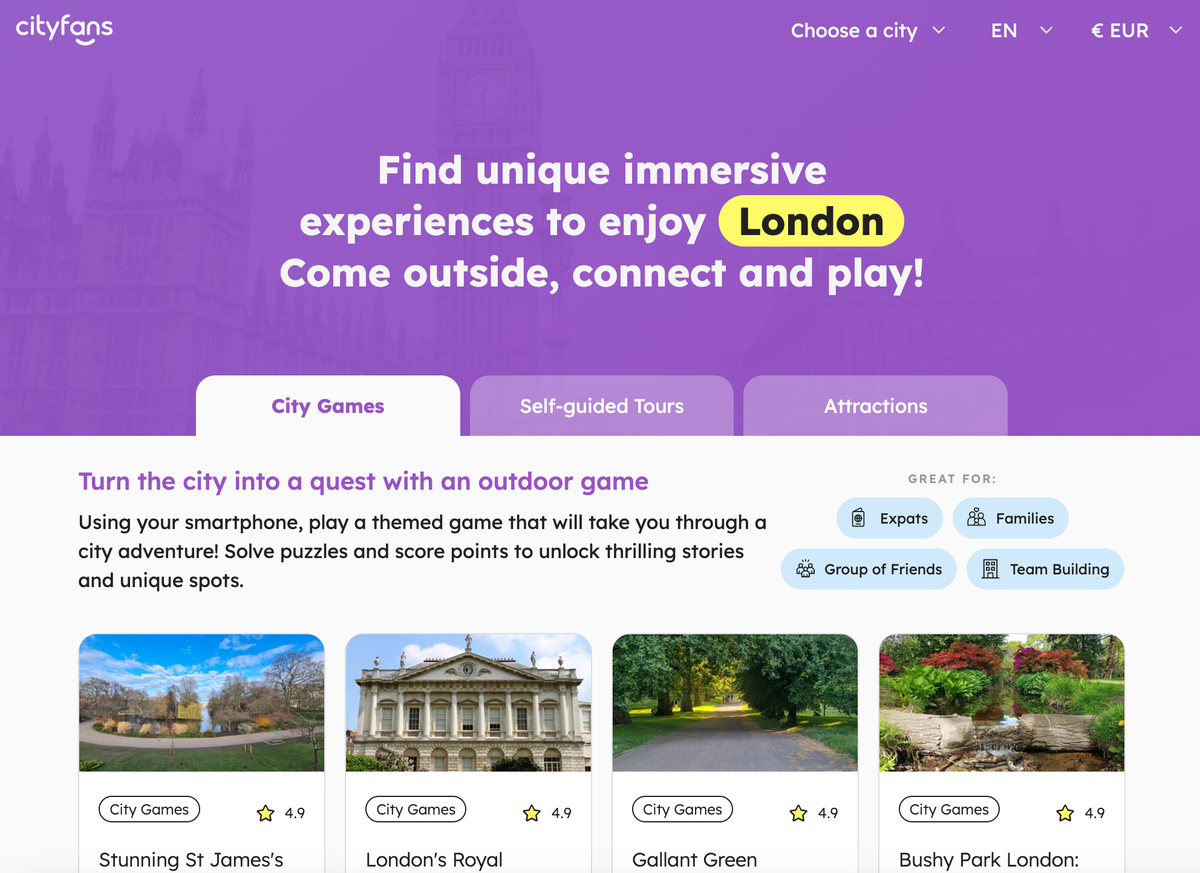Cityfans vision for rebuilding distribution for digital experiences
Digital experiences are evolving fast—but distribution hasn’t kept up. Cityfans is rethinking how travelers discover and access the next generation of city exploration.

This is a guest post by Moti Erdeapel, CEO of Cityfans, a digital experience marketplace.
The way we explore cities is changing. Or at least—it should be.
New types of digital experiences are popping up everywhere, promising travelers a fresh, flexible, and often more personal way to interact with destinations. Think AI-driven guides that respond in real time. Story-based city games. Audio tours that adapt to your pace and preferences.
Yet despite this wave of innovation, these products remain on the fringes of mainstream travel. The vast majority of tourists still turn to traditional tours, tickets, and bus rides. It’s not because they aren’t interested in digital experiences—it’s because they don’t even know they exist.
So what’s holding this category back?
Innovation Is Booming—But Visibility Isn’t
We’re seeing an explosion in creativity. Companies like iwander, Autoura, and dozens of self-guided creators are experimenting with real-time AI, creating virtual personalities to guide users, and weaving rich narratives into city exploration.
The tools are becoming more sophisticated, faster to build with, and easier to scale. AI helps reduce the cost of content creation, accelerates time to market, and enables localization like never before. For the first time, solo creators and small studios can build truly global products.
On paper, this is a breakthrough. A new category is emerging. One that is location-aware, mobile-first, and experience-rich.
But in practice, distribution is broken.
The OTA Gap
The main path to reaching travelers is still through OTAs—online marketplaces that aggregate tours, tickets, and experiences. Yet these platforms were never designed for on-demand digital products.
Here’s where the disconnect lies:
- Discovery: Most travelers have never used a digital product to explore a city. When placed next to familiar options—like guided tours or skip-the-line tickets—they’re overlooked. OTAs aren’t incentivized to explain a new category when the old one converts just fine
- Product Placement: Higher-priced experiences with high commissions dominate the front pages. Digital products, often lower in cost and new to consumers, get buried
- Tech Limitations: AI-driven or usage-based pricing models don’t fit into traditional OTA APIs. Many of these platforms still expect fixed-price, date-specific SKUs that don’t match the flexible nature of digital products.
- Redemption Experience: For physical experiences, a voucher and a meeting point suffice. But for digital products, the customer journey lives inside the phone—from payment to app download to activation. That transition (the “redemption funnel”) is still a clunky afterthought on most OTA platforms.
Because of these issues, many creators face limited options. They either:
- Stay small and independent, struggling to grow.
- Exit the space entirely when traction doesn’t follow the hype.
- Or pivot to B2B, white-labeling their products for more traditional companies—trading brand identity and margin for access.
It’s not just a missed opportunity for creators. It’s a systemic block on innovation.
The AI Question
There’s a big wildcard here: speed of adoption.
If AI becomes so embedded in our lives that every travel product—museum visit, walking tour, city pass—integrates intelligent content and real-time personalization, many of today’s hurdles might disappear.The market will shift. Travelers will expect digital-first. OTAs will evolve. And distribution will catch up naturally.
But if adoption is slow or fragmented, the current infrastructure won’t support the shift. A new layer is needed.
Toward a Digital-First Marketplace
That’s the idea behind Cityfans. We didn’t set out to build another OTA—we set out to build the kind of marketplace digital creators actually need. One that sits above the content platforms, connects fragmented creators to a global audience, and is built for digital-native formats from the ground up.
We’re now live in over 40 cities across Europe, North America, Asia, and Australia. Our focus is simple: make it easy for travelers to discover, access, and enjoy digital experiences—and for creators to scale them.
But the goal isn’t just commercial. It’s cultural. Cities deserve to be explored in ways that reflect how people now live, travel, and interact with the world: independently, intuitively, and with a desire to dive deeper.
If we get this right, digital experiences won’t be a niche. They’ll be the way millions of people see the world.
Want to read more like this?
Low volume. Short length. Focused content.
We know you're busy — only the good stuff, no noise.
